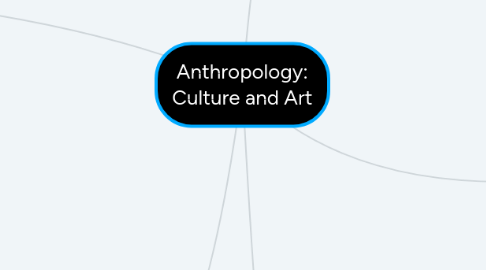
1. Performance
1.1. Performance is the use of cultural costumes, rituals, ceremonies, and more to display artistic expression and flaunt social status and role
1.1.1. "At a basic level, people attire themselves and each other to help them perform their roles in society, enhancing their bodies artistically to communicate who and what they are. Costume is a virtually universal way of distinguishing men from women, and in taking the dominant public roles, men have used the most elaborate ways of differentiating their rank and status. Often the most obvious distinction among women is whether they are sexually mature or married, which is something men seldom have to show" (Burt, 112).
2. Archaeology
2.1. Archaeology (from an anthropology definition) is the use of obtaining knowledge from artifacts -- the approach in which knowledge is obtained was historically ethnocentric and therefore must be proceeded from an appropriate social and cultural perspective
2.2. Archaeology can be used to determine the cultural background of a society -- constant/reoccurring imagery and iconography, as well as changes in these properties, can signify a cultural understanding of a society at a given point in time
2.3. "Artefact traditions that have no one to explain them, even through documentary sources, can only be understood by analogy with others that do. On the basis that all human cultures have certain common characteristics, we can assume, for instance, that motifs and designs will allude to objects from the world of sensory experience which we can recognize in the environment, in humanity, and in artefacts, including objects of the imagination that reinterpret sensory experience. If such images occur repeatedly within consistent contexts, we can assume that they are the product of a shared culture. We can further assume that the objects are represented because they have symbolic connotations, if only at the level of aesthetic value but probably much more" (Burt, 127-128).
3. Form
3.1. Form encompasses the identification and analysis of certain art form properties that work to create universal truths amongst all forms of art -- examples of properties relevant to form include unity, balanced symmetry, and reoccurring shapes
3.1.1. "Boas treated art as the introduction of aesthetic values; that is, the creation of formal qualities with sensuous appeal, into all kinds of human activity, including music, poetry, and dance as well as visual arts. The measure of aesthetic value was a certain level of technical excellence, judged against certain accepted formal standards of beauty. Artists strove for ideal forms created by technical processes, which produced styles—that is, stability of form dependent on high technique—which would be attempted by artists with varying success" (Burt, 87).
3.2. Western connoisseurs and anthropologists approached form in different ways -- western connoisseurs wanted to elevate the mind while anthropologists were interesting in discovering more about universal human thought
4. Meaning
4.1. "The things we experience are held in the mind as concepts, but to make sense of them and share them by communication with others, they have to be distinguished from each other, put in order and represented through an equivalent system of sound and sight as signs" (Burt, 97).
4.2. "As human creations, cultures and the signs they employ vary over time and space, and individual minds vary with personal histories, so communication is always inexact and subject to interpretation" (Burt, 98).
4.3. Meaning refers to the identification and analysis of the connotative meaning of art and how it is culturally significant
5. The Work of Art
5.1. "It has taken Western concepts such as religion and economics and redefined them in terms that go beyond Christianity and capitalism, or even gods and markets, in order to gain insights not only into exotic societies but also, by comparison, into the Western tradition. As a result, it has become a truism in anthropology that such categories of human activity intersect each other in society: there is economics in politics and religion in both, once we know how to look for it. Maybe art is in there too, if we choose to approach it in this way" (Burt, 141).
5.1.1. The purpose of art (from an anthropologist perspective) is to establish universal truths across all cultural and social perspectives and to facilitate healthy and growing relationships amongst a vast diverse group of people
5.1.1.1. "In dealing with what they call art, anthropologists have usually focused on particular issues of formal development and structure, symbolism and communication, and so on, without proposing universal theories of art in society"(Burt, 141).
